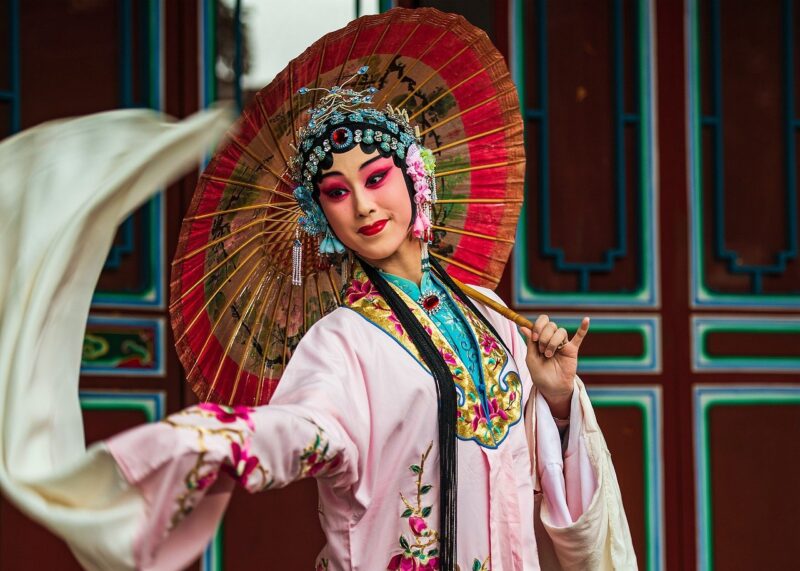Cultural Kaleidoscope: A Deep Dive into Global Traditions and Practices
November 18, 2024

In a world that continues to globalize and interconnect, understanding the rich tapestry of cultural traditions and practices across the globe has never been more essential. Every culture contributes to the societal mosaic, showcasing a unique blend of values, beliefs, and customs that define individual and communal identities.
As we journey through different regions of the globe, we will embark on an exploration of significant traditions and practices, revealing how they shape our understanding of humanity and our place within it.
1. The Importance of Culture
Culture encompasses the ideas, customs, and social behavior of a particular people or society. These elements serve countless purposes, including:
- Identity Formation: Cultural traditions foster a sense of belonging and identity among individuals and groups, offering a shared experience across generations.
- Social Cohesion: Traditions often reinforce social bonds, creating a system of values that help maintain order and unity within communities.
- Cultural Expression: Artistic manifestations of culture, such as music, dance, and visual arts, provide avenues for individual expression and community storytelling.
Culture, therefore, is not merely a collection of customs but rather a dynamic and evolving fabric that influences all aspects of life, from social interactions to political structures.
2. Celebrating Festivals Around the World
Festivals are a vibrant expression of culture, often bringing communities together through shared experiences. Here are some fascinating global festivals that showcase diverse cultural traditions:
2.1 Diwali – India
The Festival of Lights, or Diwali, is celebrated by millions across India and within the Indian diaspora worldwide. Marked by the lighting of oil lamps, fireworks, and sharing of sweets, Diwali signifies the triumph of light over darkness and good over evil. Families gather to offer prayers to Lakshmi, the goddess of wealth, and clean their homes to welcome prosperity.
2.2 Carnival – Brazil
Brazil’s Carnival is a world-renowned festival that ushers in the Lenten season with vibrant parades, samba music, and extravagant costumes. Spanning several days, Carnival showcases Brazil’s celebratory spirit and fusion of African, Indigenous, and European cultural influences, attracting millions of revelers and tourists alike.
2.3 Oktoberfest – Germany
Oktoberfest is the world’s largest beer festival held annually in Munich, Germany. Stretching over 16-18 days, it gathers millions to enjoy traditional German beer, food, music, and camaraderie. This festival reflects the German dedication to brewing and hospitality, showcasing time-honored customs alongside contemporary festivities.
3. Traditional Clothing Throughout Cultures
Traditional garments often carry deep cultural significance, embodying individual and societal identities. Here are a few examples of traditional clothing and their meanings:
3.1 Kimono – Japan
The kimono is a traditional Japanese garment characterized by its long sleeves and wrap-around style. Used in various ceremonies and festivals, it symbolizes grace and tradition, often worn by individuals during special occasions.
3.2 Sari – India
The sari is a long piece of cloth, typically measuring about six to nine yards, draped elegantly around the body. It is an emblem of grace and femininity, often worn by women across the Indian subcontinent and made from a variety of fabrics and styles, showcasing the wearer’s personality and cultural background.
3.3 Kilt – Scotland
The kilt, often associated with Scottish heritage, is a knee-length skirt-like garment made of tartan fabric. Traditionally worn by men, the kilt reflects Scottish identity, history, and pride, often showcased during cultural events and Highland games.
4. Culinary Traditions: A Flavorful Journey
Food plays an integral role in cultural identity, offering a window into the traditions and practices of a society. Here are some notable culinary traditions:
4.1 Sushi – Japan
Sushi, a quintessential Japanese dish, highlights the importance of freshness and presentation in Japanese cuisine. Typically made with vinegared rice and a variety of ingredients, including seafood and vegetables, sushi is enjoyed both as a special meal and an everyday dish.
4.2 Paella – Spain
Originating from the Valencian region, paella showcases Spain’s diverse agricultural produce. Characterized by its saffron-infused rice and inclusion of seafood, meats, and vegetables, this dish reflects the communal spirit of Spanish cuisine, often enjoyed during family gatherings.
4.3 Tacos – Mexico
Tacos are a staple of Mexican cuisine, symbolizing the country’s rich culinary heritage. Made with a variety of fillings wrapped in a corn or wheat tortilla, tacos represent a diverse array of regional ingredients and flavors, enjoyed in countless variations throughout Mexico.
5. Art and Music: Cultural Expressions
Art and music serve as powerful mediums through which cultures express their values, beliefs, and histories. Let’s take a closer look at some significant forms:
5.1 Traditional Dance – African Cultures
Traditional dance forms across African cultures often tell stories and celebrate significant events. Dances are performed during rituals, ceremonies, and communal gatherings, preserving cultural heritage and strengthening social ties among participants.
5.2 Indigenous Art – Australian Aboriginal Culture
Aboriginal art reflects nearly 60,000 years of history and is characterized by intricate patterns and stories that connect to the land. It plays a key role in cultural identity and storytelling, often used in ceremonies and as a form of spiritual expression.
5.3 Flamenco – Spain
Flamenco is a passionate dance and music genre originating from the Andalusian region in Spain. Reflecting a blend of cultural influences, flamenco embodies emotional expression through intricate footwork, guitar melodies, and soulful singing, serving as a vital aspect of Spanish heritage.
Conclusion
As we conclude our exploration of global traditions and practices, it is essential to celebrate the diversity of cultures that enrich our lives. Recognizing, preserving, and experiencing these traditions not only fosters mutual respect and understanding but also nurtures empathy in today’s increasingly interconnected world.
By engaging with and appreciating cultural variations, we contribute to a more inclusive society that honors the culinary delights, unique clothing, vibrant festivals, and expressive art that make us human.
In an era where cultural appreciation is paramount, remember that embracing our shared humanity begins with acknowledging the vibrant kaleidoscope of traditions that exist around the globe.








